
Related
Guests
- Juan Gonzálezco-host of Democracy Now!
- William Sales1968 Columbia student organizer, chair of African American Studies at Seton Hall University.
- Gustin Reichbach1968 Columbia student organizer, later a New York state Supreme Court judge.
Columbia University students began occupying Hamilton Hall shortly after midnight Tuesday as the university moved to suspend students who joined Gaza solidarity protests, and renamed it Hind’s Hall, after Hind Rajab, a 6-year-old Palestinian girl killed by Israeli soldiers in Gaza in January. We look at how it was 56 years ago today, on April 30, 1968, that the hall was also the site of the historic student occupation by students who renamed the building “Nat Turner Hall at Malcolm X University.” We feature an archival newsreel about the 1968 occupation and our interviews with campus activists on the 40th anniversary of the action about how they were protesting Columbia’s connections to the military-industrial complex and racist development policies in Harlem.
Transcript
AMY GOODMAN: This is Democracy Now!, democracynow.org, The War and Peace Report. I’m Amy Goodman.
As we go back now in history, Columbia University’s Hamilton Hall, which students occupied just after midnight last night, we reported earlier, was also the site of a historic student occupation in 1968. It was actually on this day, April 30th, 1968, when hundreds of students at Columbia University started a revolt on campus. Students went on strike. They occupied five buildings, including the president’s office in Low Library. The students barricaded themselves inside the buildings for days. They were protesting Columbia’s ties to military research and plans to build a university gymnasium in a public park in Harlem. The protests began less than three weeks after the assassination of Dr. Martin Luther King Jr. The 1968 Columbia uprising inspired student protests across the country. This is an excerpt from the documentary Columbia Revolt by Third World Newsreel.
JUAN GONZÁLEZ: Students at Columbia moved to take over buildings despite warnings from campus officials.
STUDENT ORGANIZER 1: In order to show solidarity of people with six strike leaders who they had tried to suspend, they decided to take Hamilton once again.
CAMPUS OFFICIAL: You are hereby directed to clear out of this building. I’ll give you further instructions if this building is not cleared out within the next 10 minutes.
STRIKE LEADER: I’m asking how many of you here are willing now to stay with me, sit-in here, until…
STUDENT ORGANIZER 2: After three votes, a majority decided to stay.
STUDENTS: Strike! Strike! Strike! Strike! Strike! Strike! Strike! Strike! Strike! Strike! Strike! Strike! Strike!
CAMPUS OFFICIAL: If you do not choose to leave this building, I have to inform you that we have no alternative but to call the police. Any student who is arrested will be immediately suspended.
JUAN GONZÁLEZ: The students then set up barricades inside the administration buildings.
STUDENT ORGANIZER 3: The first day in Math, we set up a defense committee, which took care of putting up the barricades. We decided what our policy would be toward police, toward jocks. We soaped some of the stairs. We taped the windows. We emptied bookcases and put them up in front of the windows in case tear gas canisters did get through the tape.
STUDENT ORGANIZER 4: And it hung up a lot of people when there would be a little scratch or mar on one of the marble-top desks or something. And the second time we built barricades, these hang-ups disappeared, and we had decided that barricades were necessary politically and strategically, and anything went in making strong and, this time, permanent-type barricades.
STUDENT ORGANIZER 5: Defense is all taken care of. Security is a problem, letting people in and out of the buildings. Watches — we need people to watch the windows every night.
STUDENT ORGANIZER 6: We had a walkie-talkie setup, citizens’ band walkie-talkies, plus there were telephone communications to every building, which the university tapped. We had three mimeographs at work constantly, and there were people who did nothing during the strike but relay to the mimeograph machine. And there was a big sign on the wall, a quote from somebody in Berkeley, who says five students and a mimeograph machine can do more harm to a university than an army.
AMY GOODMAN: An excerpt from the documentary Columbia Revolt by Third World Newsreel about 1968. Juan González, Democracy Now! co-host, introduced that tape when we first aired it on Democracy Now! on the 40th anniversary of the Columbia 1968 strike. Juan González was one of the founders of the Young Lords and one of the leaders of the Columbia student revolt in 1968.
Yes, in 2008, on that 40th anniversary, we spoke with a number of the activists involved in the Columbia strike, including William Sales, who was a leader of the Student Afro-American Society at Columbia and then the chair of African American Studies at Seton Hall University in New Jersey, as well as Gus Reichbach, who was a leading figure in Students for a Democratic Society at Columbia in 1968, then became a New York state Supreme Court judge in Brooklyn. We began the conversation with Juan González speaking on that 40th anniversary of the student strike and takeover of Hamilton Hall.
JUAN GONZÁLEZ: Now we want to go into the dorms with all of you, with some of you who may not — who may not agree with a lot of what we’ve been saying here, who have questions, who support us, who want to know more. Let’s go to the dorms. Let’s talk quietly, in small groups. We’ll be there, and everyone in Livingston — in Livingston lobby, in Furnald lobby, in Carman lobby. We’ll be there, and we’ll talk about the issues involved, and we’ll talk about where this country is going and where this university is going and what it’s doing in the society and what we would like it to do and what we would — and how we would like to exchange with you our ideas over it. Come join us now.
AMY GOODMAN: That was Juan González, courtesy of the Pacifica Radio Archives. Juan, you speaking 40 years ago, explain the context.
JUAN GONZÁLEZ: Well, in the process of trying to build the strike, we were going into all the various dorms of the students and holding what SDS used to hold a lot of in those days, which were discussion groups or political discussions, group discussions, and we were trying to win over more people to the strike at that period of time. And this was after, obviously, the big — the major police occupation of the campus, which occurred on April 30th, and as the rest — throughout the rest of the semester, there was a strike that shut down the entire university for the rest of the year.
AMY GOODMAN: So, Gus Reichbach, now a judge, then a leader of SDS, please set the scene for us. How did this happen? Where were you before the strike?
GUSTIN REICHBACH: Well, I was one of the few law students who was involved in campus activity, antiwar activity, anti-gym activity.
The actual event itself was a spontaneous one, in terms of the actual occupation of the buildings. But the predicate for it was really years of organizing on the campus, really beginning in 1964. The year before, there had been a big demonstration about recruitment in ROTC. The gym was becoming an escalating issue. People were getting more and more responsive to the protest of the local community in Harlem, who was opposing the gym.
So, you know, we were often given, I’m happy to say, more credit than we deserve, in the sense that this was seen as a well-calculated plot, where at any point along that day things might have taken a different turn. In fact, probably if Dean Coleman in Hamilton Hall had opened his door and received the petition, the occupation may never have occurred. So things proceed in peculiar ways. But even though the events were unplanned, the lead-up involved years of organizing.
AMY GOODMAN: You mention '64. Bill Sales, ’65, Malcolm X was gunned down not far from there, now, actually at the Audubon Ballroom, that's been taken over by a new building, the Columbia University biotech building, also very controversial. Did that play a role, though that was three years before?
WILLIAM SALES: The Student Afro-American Society has very definite links to Malcolm X through the son of Kenneth Clark, Hilton Clark, who was one of the founding members of that organization, who was very much inspired by Malcolm X. SAAS always had a distinctly Black nationalist aura about it that was basically its guiding principle. So we saw ourselves as being in a tradition that had been highlighted by Malcolm X. When we actually took over Hamilton Hall, we renamed it Nat Turner Hall of Malcolm X University.
AMY GOODMAN: Explain who Nat Turner was.
WILLIAM SALES: Nat Turner was a slave preacher who in 1831 in Southampton County, Virginia, led the largest slave revolt on the North American mainland.
JUAN GONZÁLEZ: Bill, one of the things, I think, that most people are not aware of, because sometimes they don’t connect all of the events leading up to a particular crisis, was the climate. As I’ve often mentioned, this strike or the occupation began less than three weeks after the King assassination. And the impact on young people then, not only of the assassination, but of the disturbances and rebellions that broke out in over a hundred cities across the country — any of you want to talk about what the climate for young people was at that moment, at that particular moment in history?
WILLIAM SALES: Well, I certainly can speak to the African American experience, and it certainly — what made it an important experience was that for the first time other than African Americans were also being caught up in that energy. But most of the people in Hamilton Hall had been in one or another urban rebellion. For instance, you mention the King assassination. That very night, I and Ray Brown and other people would go on to play leadership roles of the takeovers that were on 125th Street. First time anybody ever shot at me was a policeman shooting over my head on 125th Street as various stores went up in flames. We were also, much earlier that previous summer, in Newark during the Newark rebellions. We had raised funds in support of the families of students killed on February the 8th, I think, in Orangeburg, South Carolina, South Carolina State. So there was a continuous involvement in the turmoil of the day that incorporated larger and larger numbers of people who also would take over those buildings.
AMY GOODMAN: That was William Sales, leader of the Student Afro-American Society at Columbia in 1968, then the chair of African American Studies at Seton Hall University in New Jersey, and Gus Reichbach, who was a leader in Students for a Democratic Society at Columbia in 1968. He was a Columbia law student, then a New York State Supreme Court judge in Brooklyn. Tom Hayden was also there. To see our full interview on the 40th anniversary of the Columbia revolt, along with Juan González, you can go to democracynow.org.

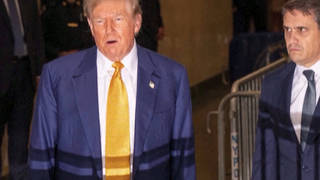
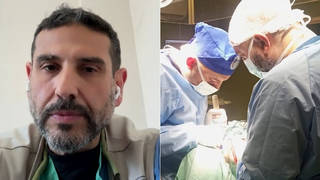
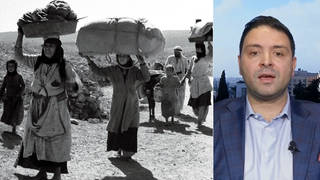
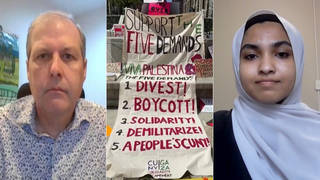
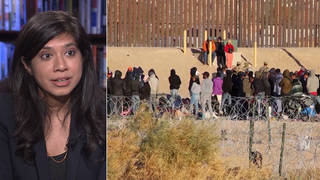
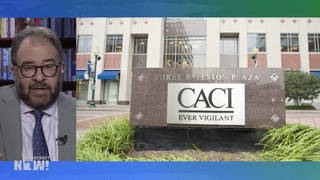
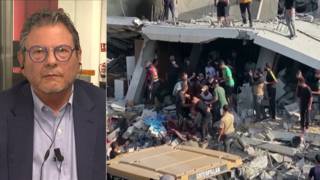


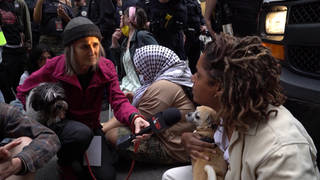
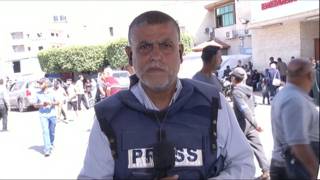
Media Options